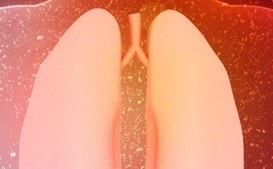At a glance
- Coal mine dust (called respirable dust) is the leading cause of black lung disease (i.e., coal workers' pneumoconiosis, or CWP).
- CWP was the underlying or contributing cause of death for 75,178 miners from 1970– 2016.
- NIOSH has conducted engineering control, dust monitoring, and other types of research to address dust exposure.

Hazard
In underground and surface mining operations, respirable dust can be generated and expose workers during the extraction, transport, and processing of coal, ore, and stone.
This type of dust includes extra fine particles that people can inhale into their lung tissue. Inhalation of respirable coal dust can lead to black lung disease (also called coal workers' pneumoconiosis), a potentially disabling lung disease. Read About Pneumoconiosis to learn more about black lung disease symptoms, treatment, and other important facts.
Symptoms and treatment
Symptoms of black lung may include coughing and shortness of breath.
Medical treatment cannot cure this disease, so preventing it—through controlling respirable dust exposure—is essential.
Data
From 1970 through 2016, black lung disease was the underlying or contributing cause of death for a total of 75,178 miners. From 2007 through 2016, black lung disease was the underlying or contributing cause of death for 4,118 miners.
Research
The NIOSH Mining program conducts research to identify and develop improved dust control technologies. The technologies can then be implemented by the industry to reduce mine workers' respirable dust exposure. Four key components of this dust research program include:
- Intramural engineering control research
- Development of improved dust monitoring capabilities
- Technology transfer
- Funding of extramural research projects
Engineering control research
NIOSH conducts ongoing research that addresses respirable dust control problems. The following three elements are used to identify occupations at high risk for exposure to elevated dust levels:
- Mine Safety and Health Administration (MSHA) compliance sampling data
- Mine-site observations
- Interested party input
Laboratory and/or mine-site research is then conducted to identify and evaluate dust control technologies for these high-risk occupations. NIOSH researchers use dust laboratories in Pittsburgh to evaluate technologies under controlled conditions that are not available at operating mine sites. Control technologies proven successful in the laboratory then undergo final evaluation at operating mine sites to demonstrate in-mine capability and feasibility.
Development of improved dust monitoring capabilities
Real-time monitoring of respirable dust exposures enables mine operators to identify potential overexposures and implement interventions to prevent these overexposures. The personal dust monitor is a gravimetric-based dust monitor that provides real-time dust readouts to the miner. The personal dust monitor was developed by NIOSH and partners. Extensive laboratory and in-mine testing has demonstrated that the personal dust monitor is an accurate dust sampler suitable for underground use. Since 2016, MSHA has required mine operators to use the personal dust monitor for compliance dust sampling. This requirement is part of its most recent respirable dust regulation.
NIOSH researchers have also developed an assessment technique. The technique places a video camera and real-time dust monitor on a worker. The video camera and real-time dust monitor record work tasks and associated dust levels. This "Helmet-CAM" method uses PMRD-developed software (EVADE) to combine the video and dust file so the worker can view the files. Additionally, this software identifies the tasks that generate the most dust. Engineering controls and/or changes in work procedures can then be implemented to reduce dust exposures.
Publications
NIOSH has published handbooks summarizing successful dust control technologies and include:
- Best Practices for Dust Control in Coal Mining
- Best Practices for Dust Control in Metal/Nonmetal Mining
- Dust Control Handbook for Industrial Minerals Mining and Processing (second ed.)
Mine operators can use these handbooks to identify basic dust control technologies that can be utilized industrywide. Additionally, the handbooks can be used to identify controls more suitable to specific operating conditions. Specific research findings are presented at conferences and published in journals to provide results to the industry in a timely manner.
Resources
Click the following link to access information about NIOSH's respirable dust research projects: Related projects
